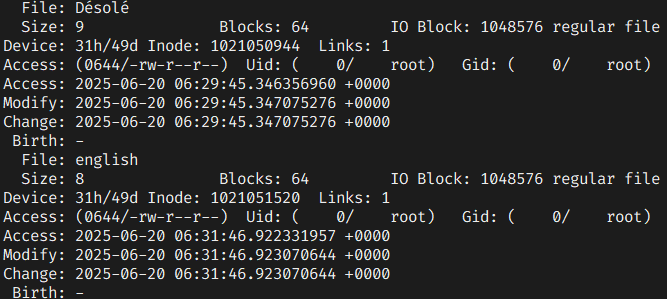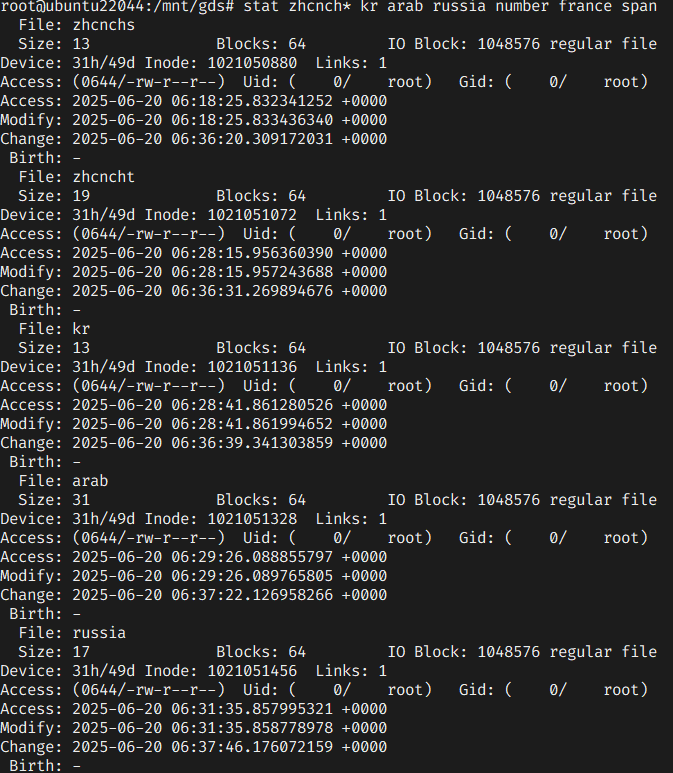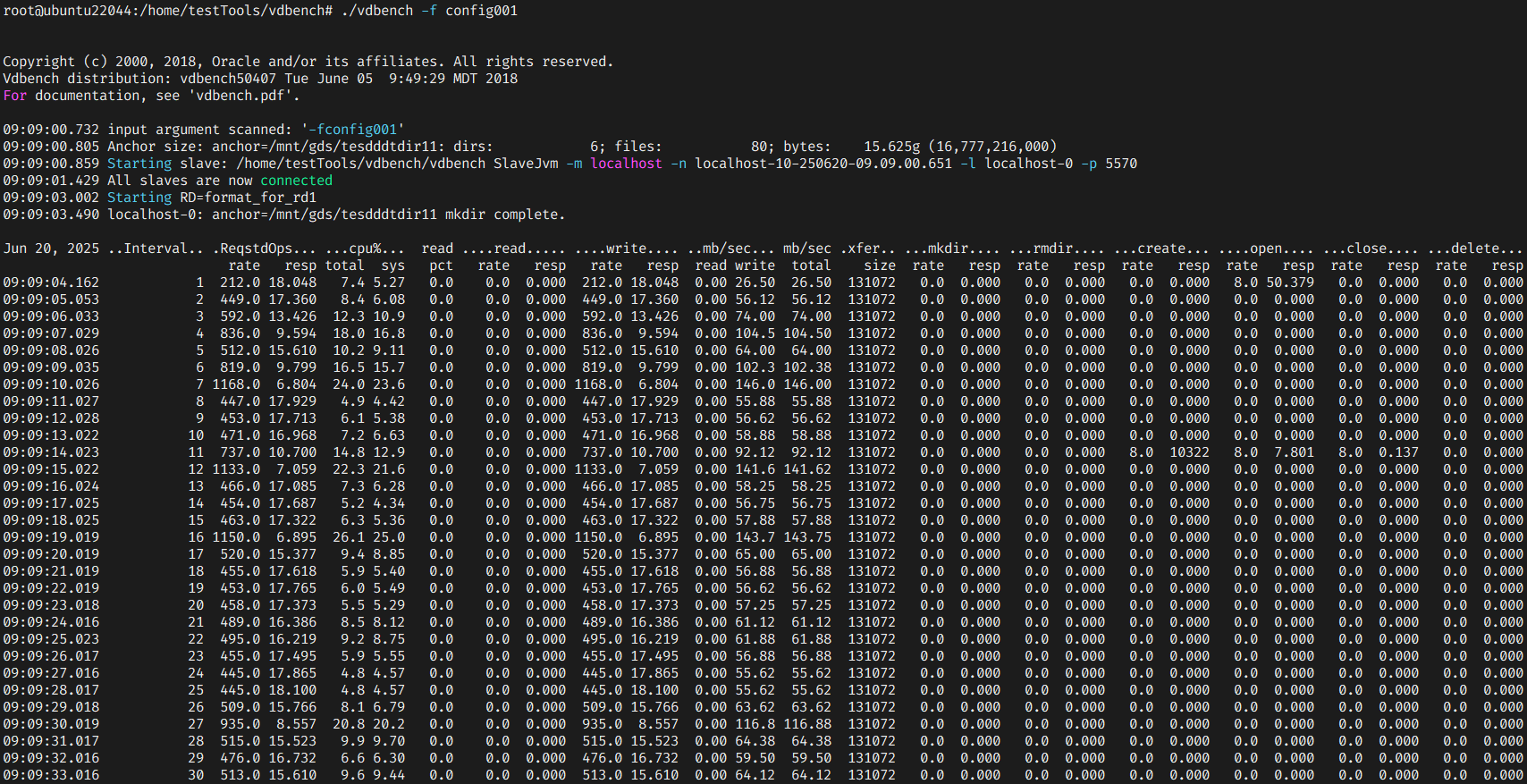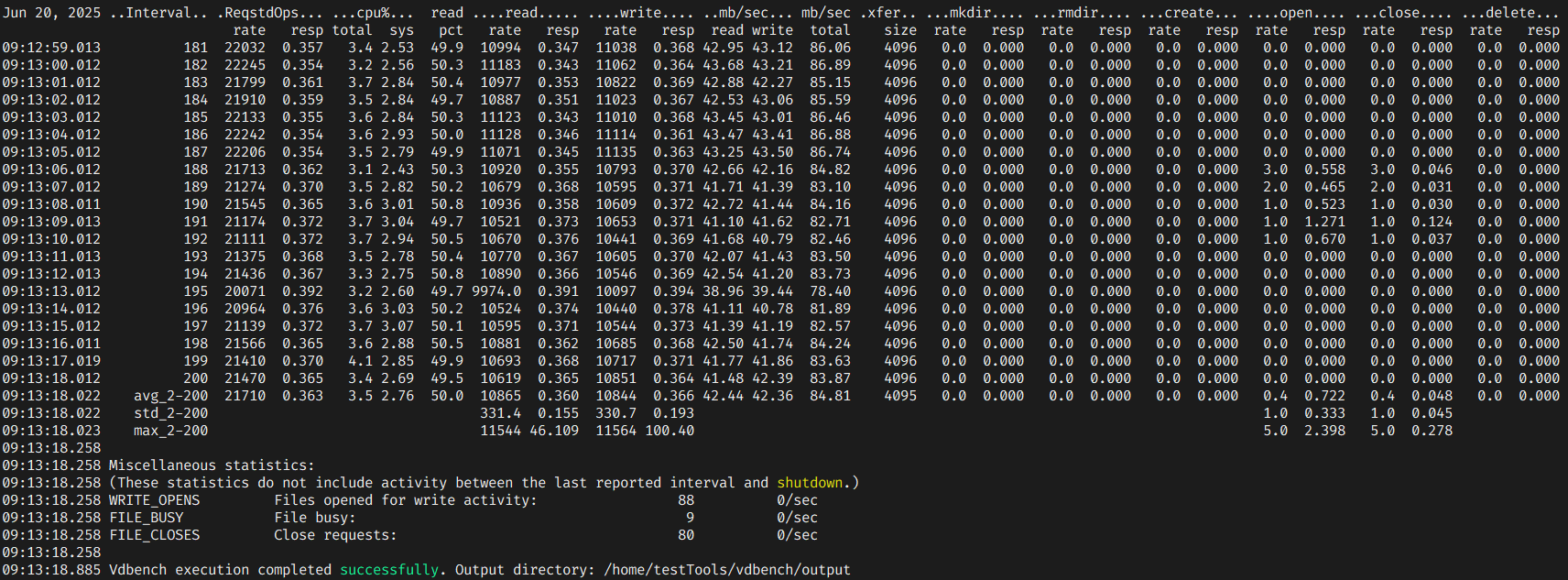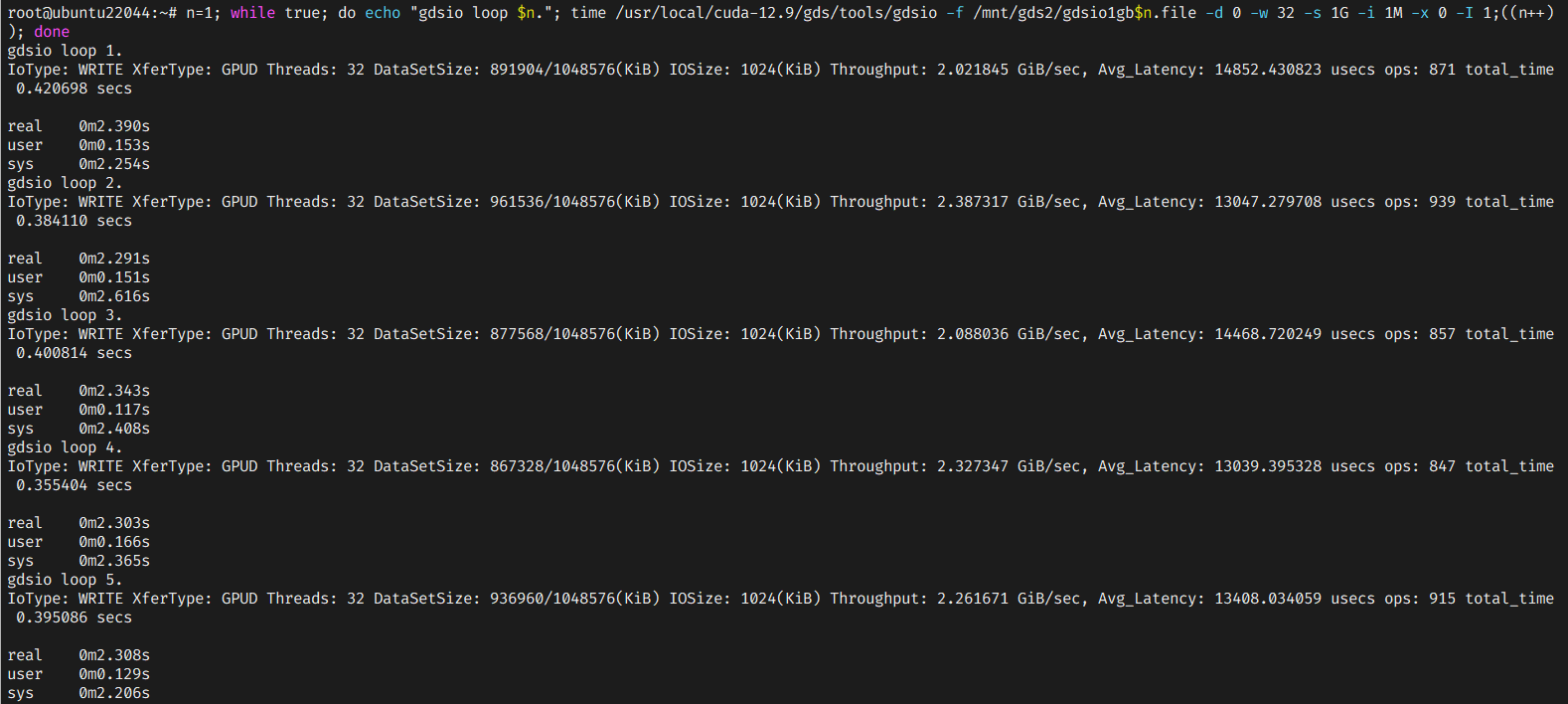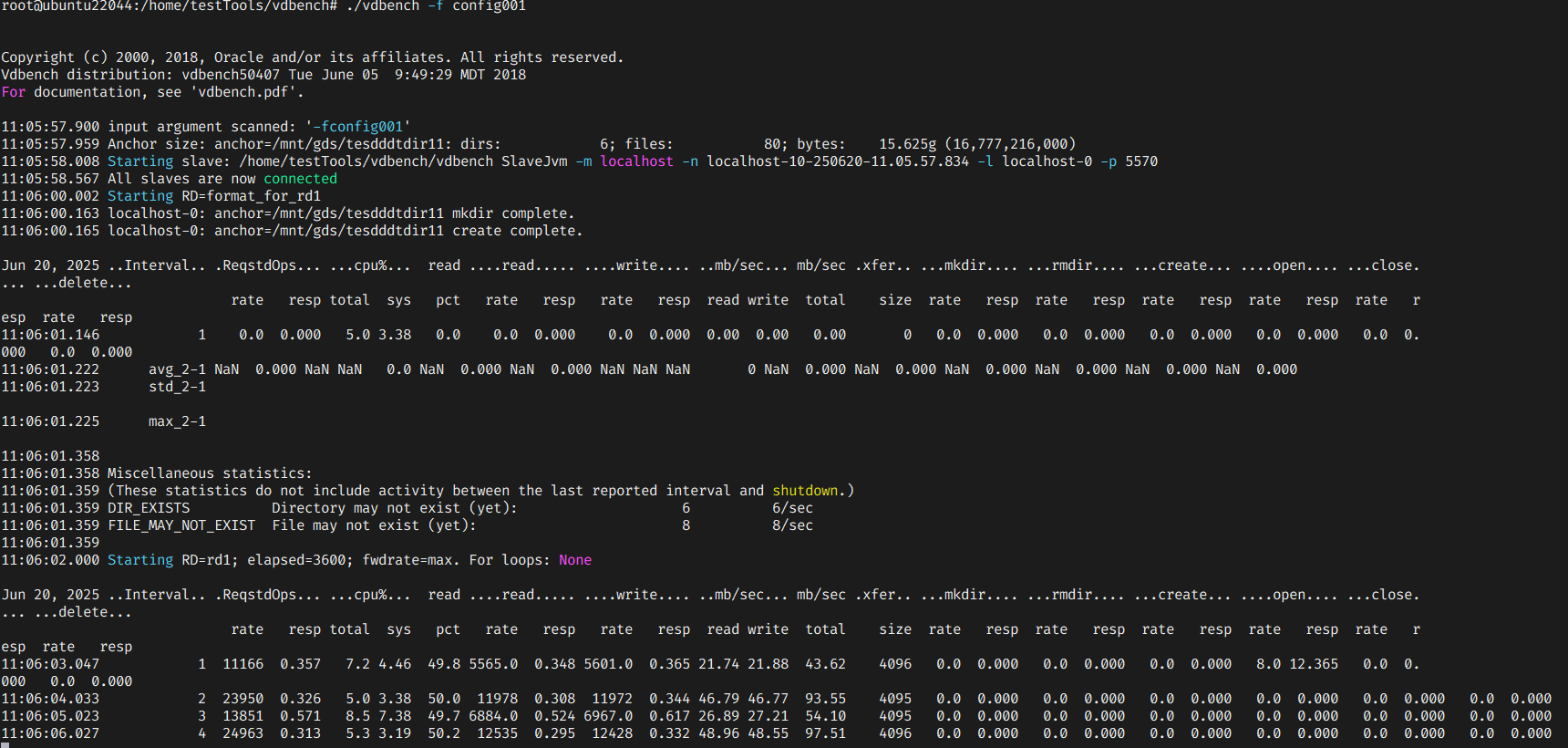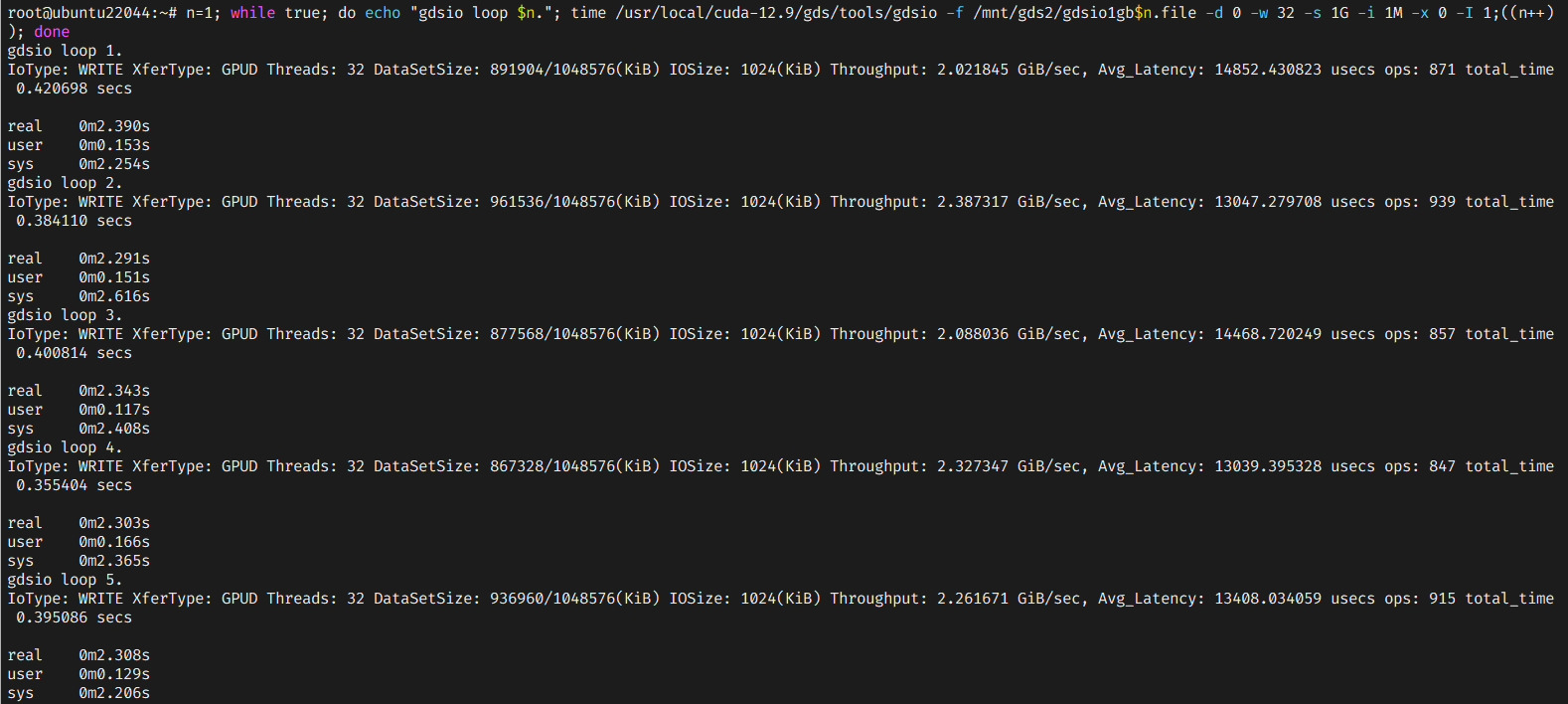Huawei OceanStor A Series Storage and NVIDIA GDS Interoperability Test Report

Axians Global
All Rights Reserved
Executive Summary
Axians Global (“Axians”) assessed the interoperability of Huawei OceanStor A Series Storage (hereinafter referred to as “the storage” as well) and NVIDIA GDS through NFS over RDMA.
In the assessment, Axians has determined that NVIDIA GDS will function with Huawei OceanStor A series Storage for the following scenarios:
Test Scenario | Storage Involved | Result |
Basic Function – NAS | OceanStor A Series Storage | Passed |
Reliability – NAS | OceanStor A Series Storage | Passed |
This document contains detailed test cases and the corresponding output. The test procedures are referenced from standard online documentation from NVIDIA and Huawei.
1. Environment Configuration
1.1 Networking diagram
Figure 1 Huawei OceanStor A Series storage and NVIDIA GDS Test Networking
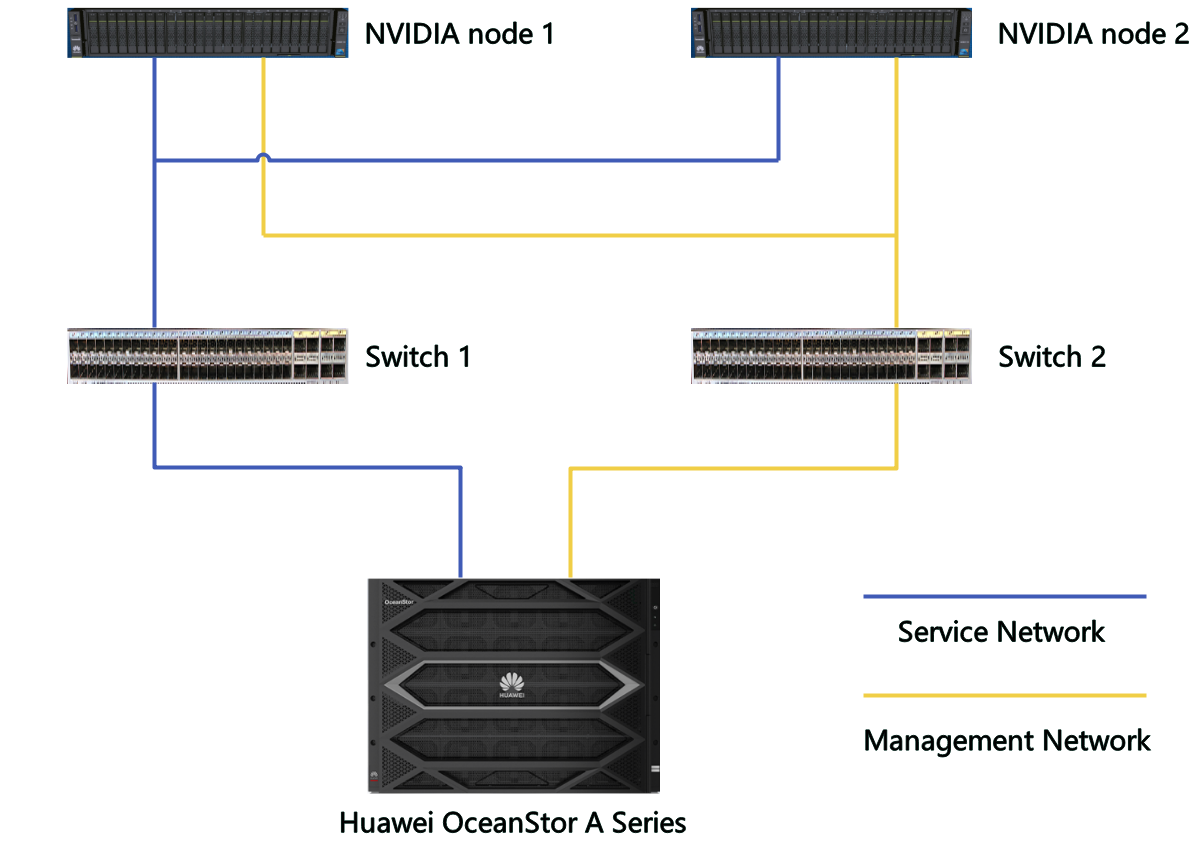
Networking description:
- Two physical servers were deployed as NVIDIA Nodes, with MLNX_OFED, GDS, and CUDA software installed.
- The management network and service network are configured to connect the NVIDIA Nodes and Huawei storage through switches.
- The management network connects the NAS client and Huawei storage via 10G TCP/IP network. The Service network connects the NAS client and Huawei storage via 200G RoCE network.
1.2 Hardware and Software Configuration
1.2.1 Storage Configuration
Table 1-1 Huawei storage configuration table
Name | Model | Version | Quantity |
Storage | OceanStor A Series | V700 | 1 |
1.2.2 Matching Hardware Configuration
Table 1-2 Hardware Configuration
Name | description | Usage | Quantity |
Server |
| NVIDIA node | 1 |
Ethernet switch | CE9860 | Service Network Switch | 1 |
1.2.3 Test Software and Tools
Table 1-3 Test Software and Tool List
Software Name | description | Version |
Operating system | Ubuntu | 22.04.4 |
MOFED | MLNX-OFED | 24.10-2.1.8.0 |
CUDA | NVIDIA CUDA toolkit | 12.8 |
NVIDIA Driver | NVIDIA GPU Driver | 570.133.07 |
GDSIO | IO test tool | 12.8 |
Vdbench | IO test tool | 5.0.4.7 |
2. Test Cases and Records
2.1 Functional Test
2.1.1 Verify the NVIDIA GDS configuration
Test Purpose | To verify that the NVIDIA GDS configuration is available. |
Test Networking | Huawei OceanStor A Series storage and NVIDIA GDS Test Networking. |
Prerequisites | 1. Huawei OceanStor A Series storage system is running normally. 2. The NVIDIA nodes are running normally. |
Test Procedure |
|
Expected Result |
|
Test Results | 1. In step 1, the driver configuration of NFS is supported.  2. In step 2, mount the NFS filesystem of the storage on the NVIDIA node with RDMA protocol successfully. 3. In step 3, XferType is GPUD.  |
Test Conclusion | Passed |
2.1.2 Modify file and directory permissions using the chmod command
Test Purpose | To verify that file and directory permissions can be successfully modified as required. |
Test Networking | Huawei OceanStor A Series storage and NVIDIA GDS Test Networking. |
Prerequisites | 1. Huawei OceanStor A Series storage system is running normally. 2. The NVIDIA nodes are running normally. 3. Mount the NFS filesystem of the storage on the NVIDIA node with RDMA protocol successfully. |
Test Procedure | Use the [chmod 000] command on the NVIDIA node to modify the permissions of file and directory in the shared directory, check the permissions of the file and directory. 2. Use the [chmod 777] command on the NVIDIA node to modify the permissions of file and directory in the shared directory, check the permissions of the file and directory. |
Expected Result |
|
Test Results |
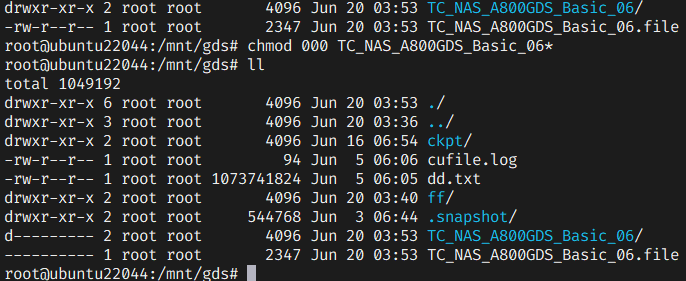 2. In step 2, the file permissions are: -rwxrwxrwx, the directory permissions are: d rwxrwxrwx. 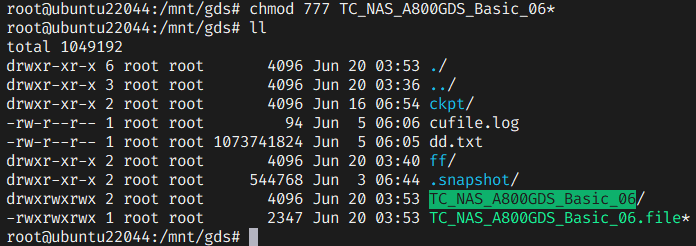 |
Test Conclusion | Passed |
2.1.3 Create files with filenames in various languages
Test Purpose | To test file names of various languages. |
Test Networking | Huawei OceanStor A Series storage and NVIDIA GDS Test Networking. |
Prerequisites | 1. Huawei OceanStor A Series storage system is running normally. 2. The NVIDIA nodes are running normally. 3. Mount the NFS filesystem of the storage on the NVIDIA node with RDMA protocol successfully. |
Test Procedure |
|
Expected Result |
|
Test Results |


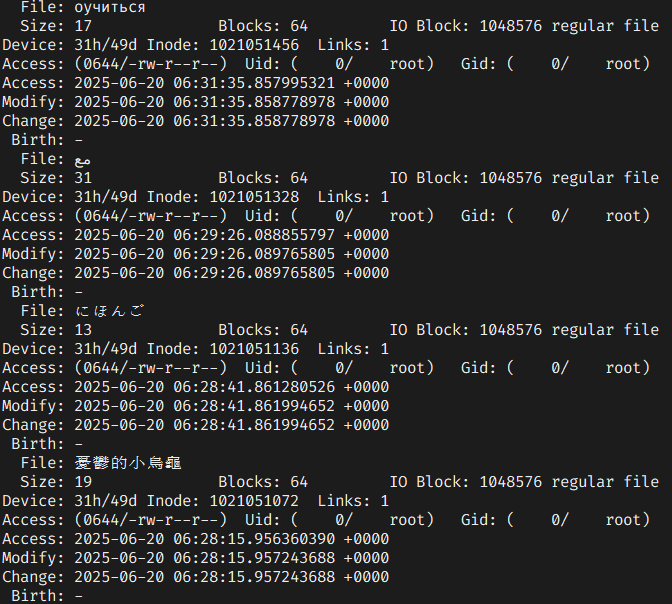


  |
Test Conclusion | Passed |
2.1.4 Create a large file
Test Purpose | To verify that the NVIDIA node can create a large file. |
Test Networking | Huawei OceanStor A Series storage and NVIDIA GDS Test Networking. |
Prerequisites | 1. Huawei OceanStor A Series storage system is running normally. 2. The NVIDIA nodes are running normally. 3. Mount the NFS filesystem of the storage on the NVIDIA node with RDMA protocol successfully. |
Test Procedure | 1. Creates a 2TB file with gdsio in the shared directory. 2. Check the file with command [ls]. 3. Delete this file. |
Expected Result |
|
Test Results |
 2. In step 2, the size of the created file is 2TB.  3. In step 3, the file is deleted successfully.  |
Test Conclusion | Passed |
2.1.5 Copy files
Test Purpose | To verify that the NVIDIA node can copy files successfully. |
Test Networking | Huawei OceanStor A Series storage and NVIDIA GDS Test Networking. |
Prerequisites | 1. Huawei OceanStor A Series storage system is running normally. 2. The NVIDIA nodes are running normally. 3. Mount the NFS filesystem of the storage on the NVIDIA node with RDMA protocol successfully. |
Test Procedure |
|
Expected Result |
|
Test Results |

2. In step 2, the copy operation was successful; all attributes of the target file are normal; the content of the target file is consistent with the source file. 
3. In step 3, the copy operation was successful; all attributes of the target file are normal; the content of the target file is consistent with the source file. 
4. In step 5, the copy operation was successful; all attributes of the target file are normal; the content of the target file is consistent with the source file. 
5. In step 6, the copy operation was successful; all attributes of the target file are normal; the content of the target file is consistent with the source file.  6. In step 7, the copy operation was successful; all attributes of the target file are normal; the content of the target file is consistent with the source file.  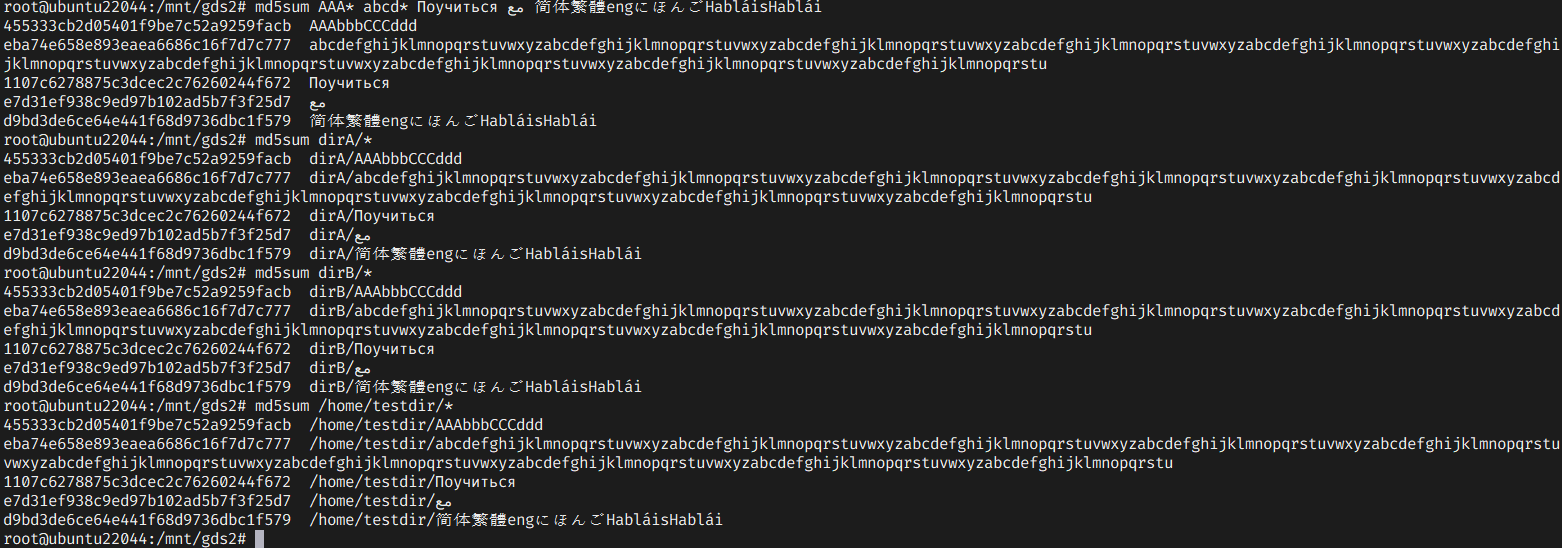 |
Test Conclusion | Passed |
2.1.6 Create directories with directory names in various languages
Test Purpose | To test directory names of various languages. |
Test Networking | Huawei OceanStor A Series storage and NVIDIA GDS Test Networking. |
Prerequisites | 1. Huawei OceanStor A Series storage system is running normally. 2. The NVIDIA nodes are running normally. 3. Mount the NFS filesystem of the storage on the NVIDIA node with RDMA protocol successfully. |
Test Procedure | 1. Use the [mkdir] command to create directories with directory names in various languages in the shared directory. 2. Rename the directories’ names to English characters. Languages include: Simplified Chinese、Traditional Chinese(寧鈴禮劉)、English(english)、Japanese(にほんご) 、Korean(조선말)、Spanish(Habláis)、Arabic(مع سّلامة) 、French(Désolé)、Russian(Поучиться)、Numbers(123). |
Expected Result |
|
Test Results |
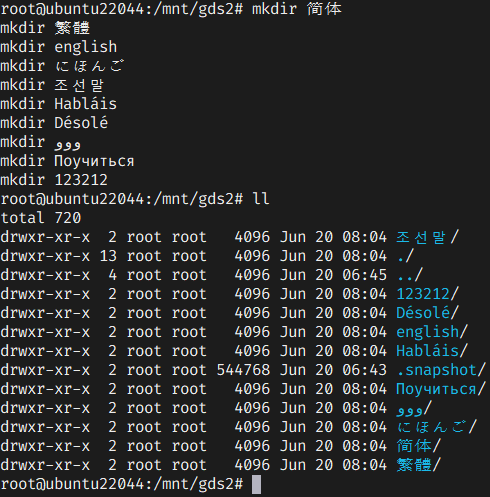 2. In step 2, the directories are renamed successfully.  |
Test Conclusion | Passed |
2.1.7 Mount the NFS filesystem of the storage on the NVIDIA node using the nconnect parameter.
Test Purpose | To verify that the NFS filesystem can be successfully mounted on the NVIDIA node using the nconnect parameter. |
Test Networking | Huawei OceanStor A Series storage and NVIDIA GDS Test Networking. |
Prerequisites | 1. Huawei OceanStor A Series storage system is running normally. 2. The NVIDIA nodes are running normally. |
Test Procedure |
3. Mount the NFS filesystem of the storage on the NVIDIA node with RDMA protocol and the nconnect parameter, set the nconnect parameter as 17. |
Expected Result |
|
Test Results |
  3. In step 3, mount failed. |
Test Conclusion | Passed |
2.2 Reliability Test
2.2.1 NVIDIA node reboot
Test Purpose | To verify the I/O stress could be recovered from a reboot of NVIDIA node. |
Test Networking | Huawei OceanStor AI storage and NVIDIA GDS Test Networking |
Prerequisites |
|
Test Procedure |
|
Expected Result |
|
Test Results |
2. In step 2, the node reboot successfully. |
Test Conclusion | Passed |
2.2.2 Network interface of NVIDIA node failure
Test Purpose | To verify the network interface failure of NVIDIA node will not affect the I/O stress. |
Test Networking | Huawei OceanStor AI storage and NVIDIA GDS Test Networking |
Prerequisites |
|
Test Procedure |
3. Check the status of I/O stress. |
Expected Result | In step 1, the I/O stress is running normally. In step 2, the network interface shutdown successfully.
|
Test Results | 1. In step 1, the I/O stress is running normally. 


2. In step 2, the network interface shutdown successfully. 

3. In step 3, the I/O stress are not affected, and the reset time is within the specified range. 
|
Test Conclusion | Passed |
2.2.3 Unmount and mount the file system repeatedly
Test Purpose | To verify mount and unmount a file system repeatedly will not affect other mount points. |
Test Networking | Huawei OceanStor AI storage and NVIDIA GDS Test Networking |
Prerequisites |
|
Test Procedure |
|
Expected Result |
|
Test Results |
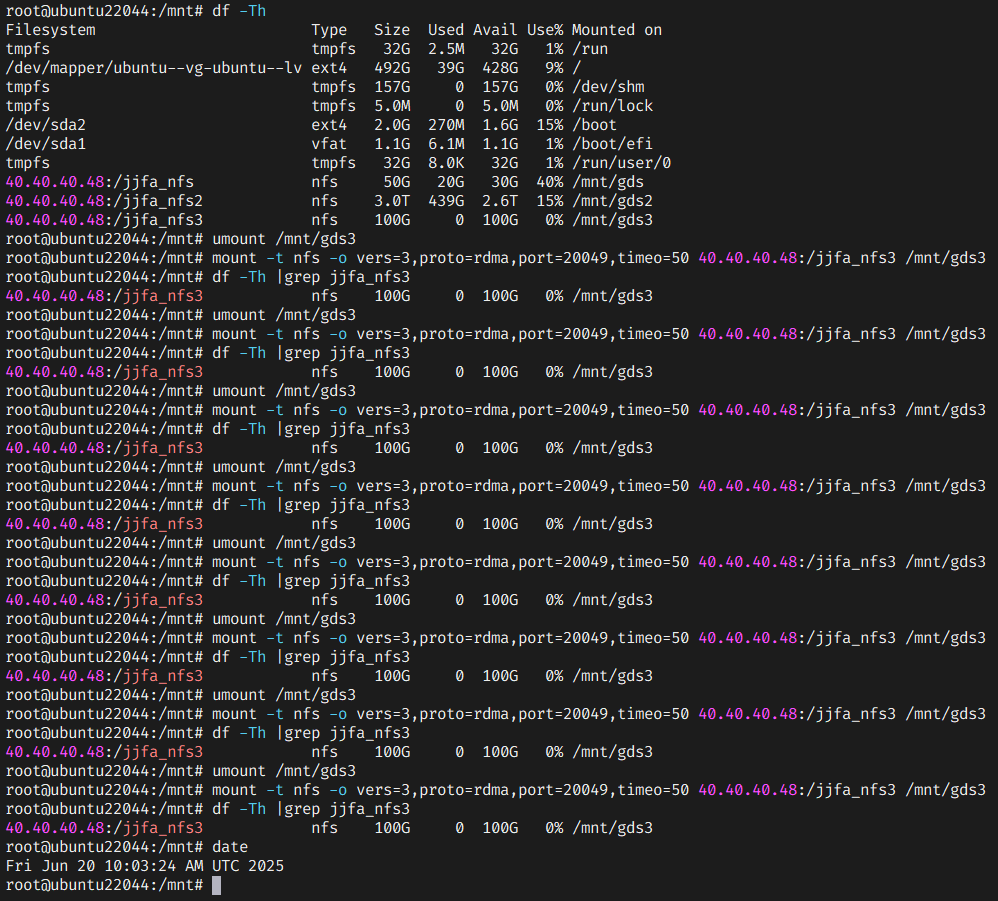 3. In step 3, the I/O stress are not affected. 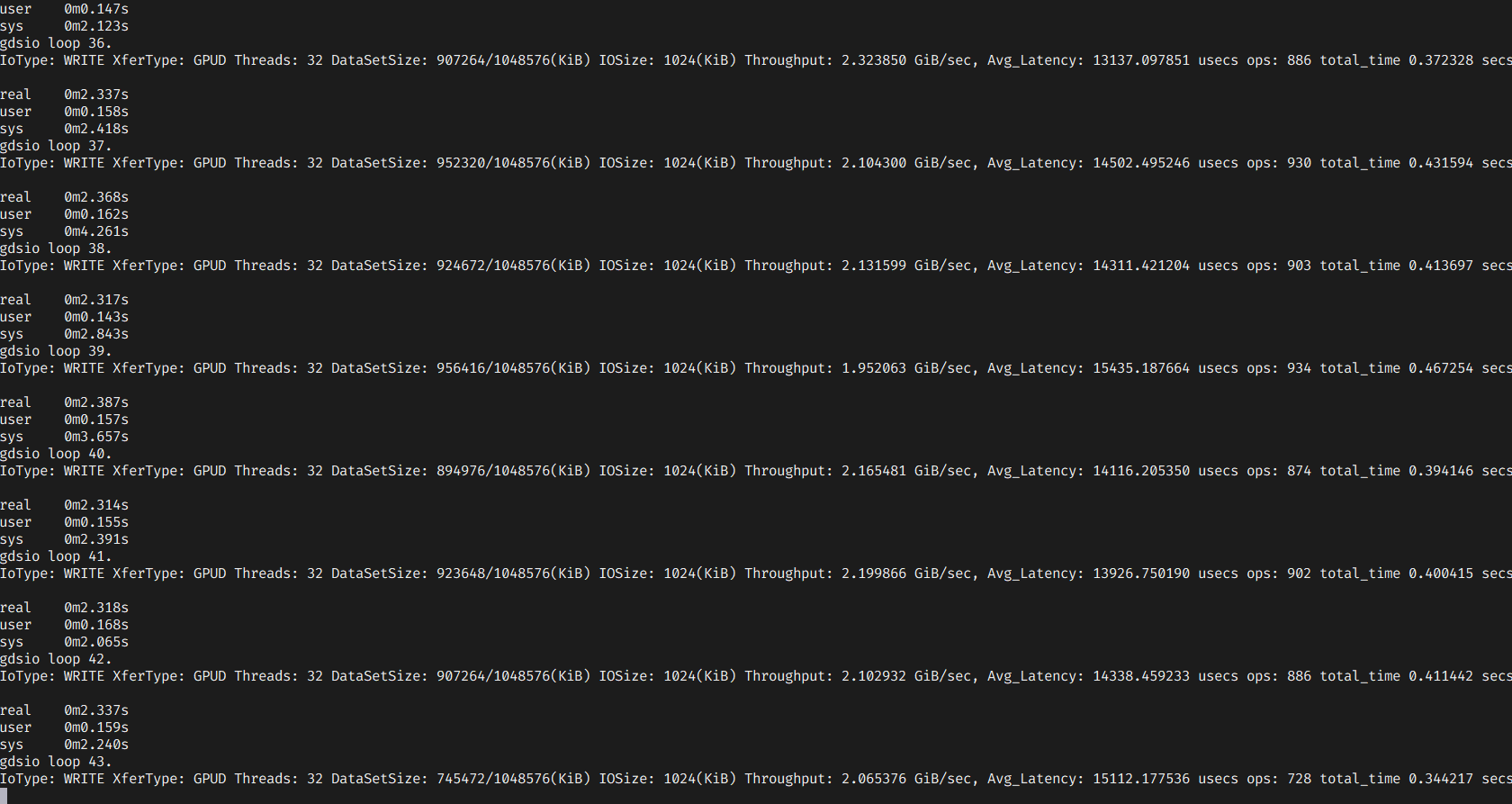  |
Test Conclusion | Passed |
2.2.4 Rpcbind process failure
Test Purpose | To verify the NFS process failure will not affect the I/O stress. |
Test Networking | Huawei OceanStor AI storage and NVIDIA GDS Test Networking |
Prerequisites |
|
Test Procedure |
|
Expected Result |
2. In step 2, the NFS process killed successfully.
|
Test Results |
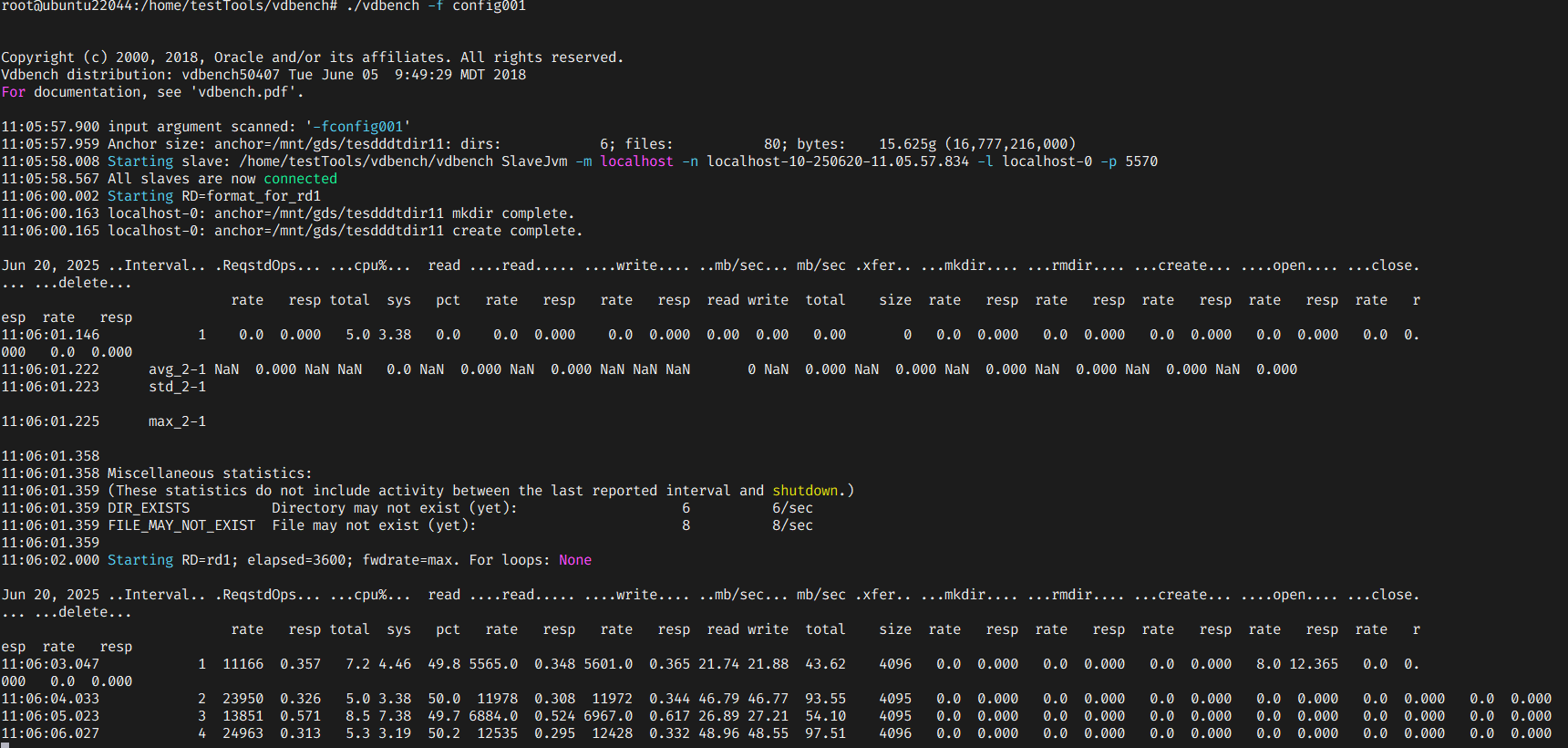
2. In step 2, the NFS process killed successfully.   3. In step 3, the I/O stress are not affected.   |
Test Conclusion | Passed |
2.2.5 Network interface of storage failure
Test Purpose | To verify the storage interface failure will not affect the I/O stress. |
Test Networking | Huawei OceanStor AI storage and NVIDIA GDS Test Networking |
Prerequisites |
|
Test Procedure |
3. Check the status of I/O stress. |
Expected Result | 1. In step 1, the I/O stress is running normally. 2. In step 2, the storage interface shutdown successfully. 3. In step 3, the zeroing count of I/O stress is within the specification range. |
Test Results |
  3. In step 3, the zeroing count of I/O stress is within the specification range. 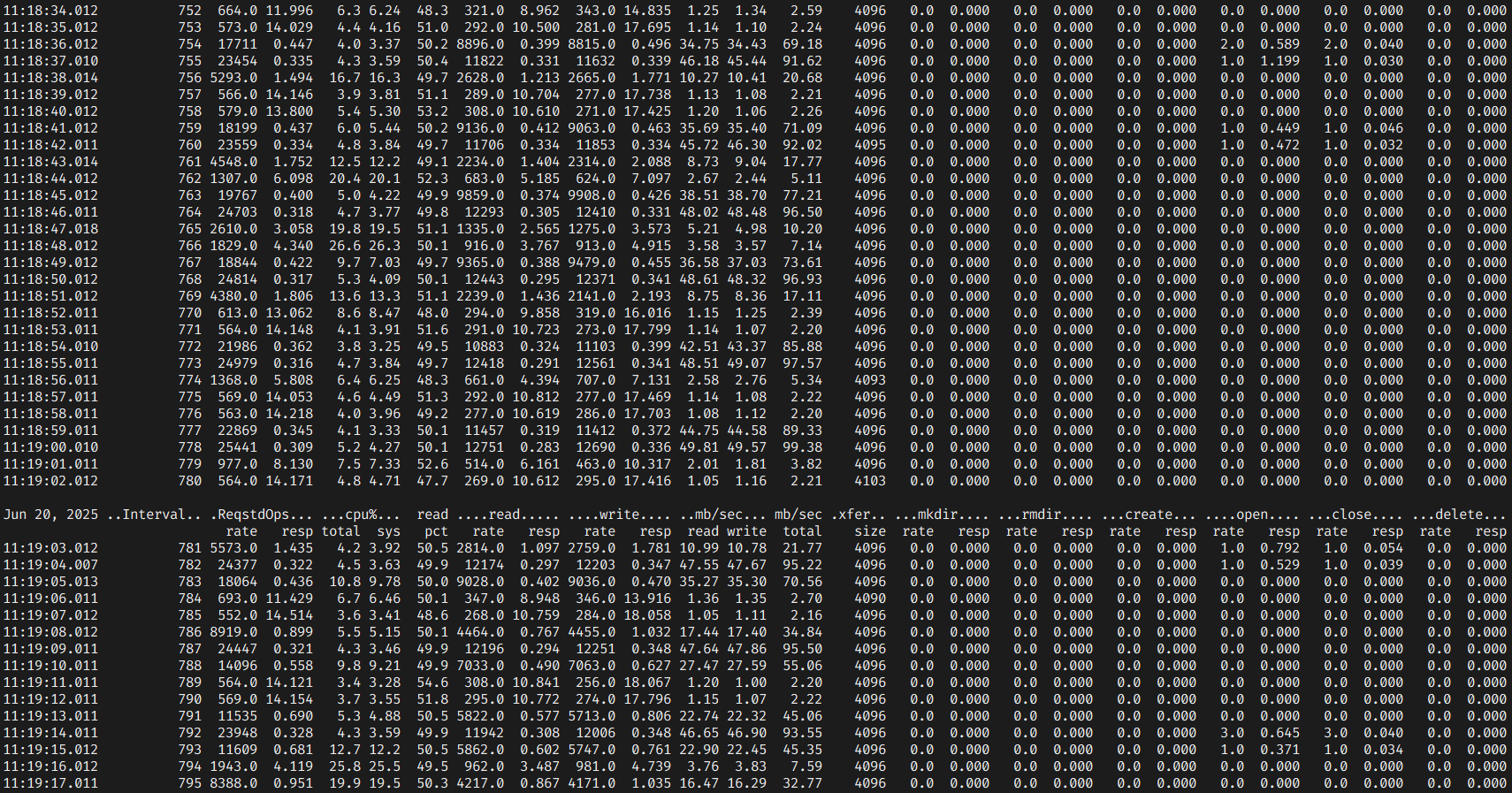 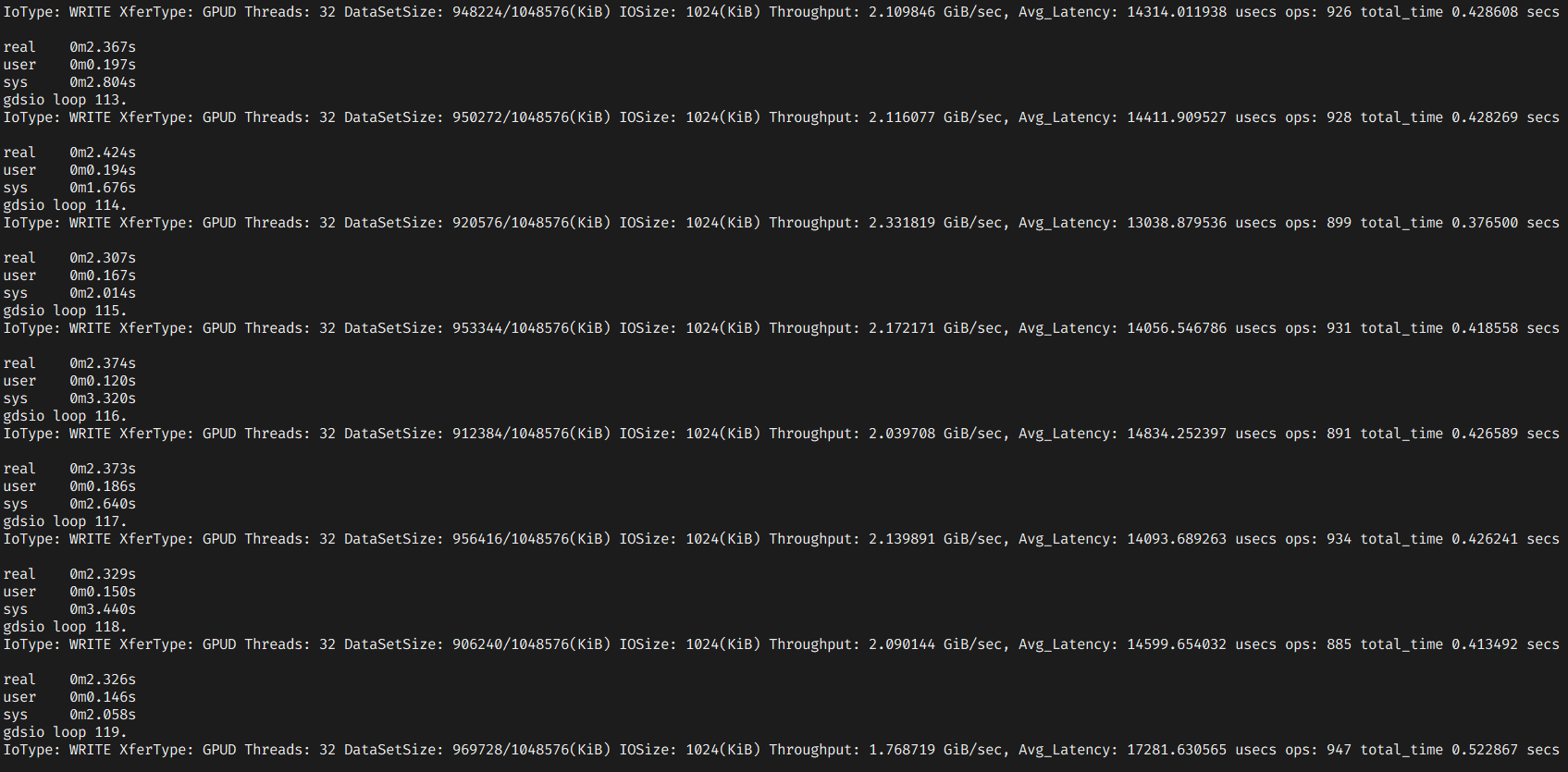 |
Test Conclusion | Passed |




